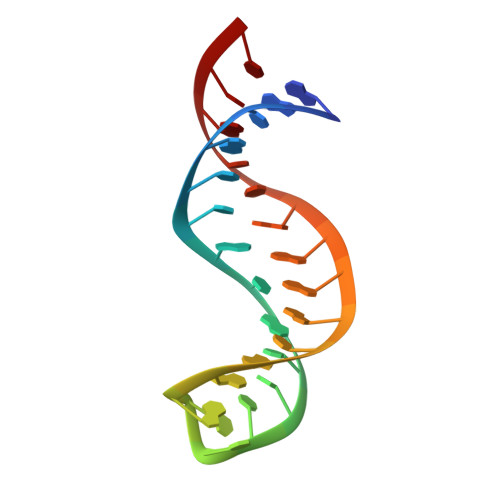The impact of aminoglycosides on the dynamics of translation elongation.
Tsai, A., Uemura, S., Johansson, M., Puglisi, E.V., Marshall, R.A., Aitken, C.E., Korlach, J., Ehrenberg, M., Puglisi, J.D.(2013) Cell Rep 3: 497-508
- PubMed: 23416053
- DOI: https://doi.org/10.1016/j.celrep.2013.01.027
- Primary Citation of Related Structures:
2M4Q - PubMed Abstract:
Inferring antibiotic mechanisms on translation through static structures has been challenging, as biological systems are highly dynamic. Dynamic single-molecule methods are also limited to few simultaneously measurable parameters. We have circumvented these limitations with a multifaceted approach to investigate three structurally distinct aminoglycosides that bind to the aminoacyl-transfer RNA site (A site) in the prokaryotic 30S ribosomal subunit: apramycin, paromomycin, and gentamicin. Using several single-molecule fluorescence measurements combined with structural and biochemical techniques, we observed distinct changes to translational dynamics for each aminoglycoside. While all three drugs effectively inhibit translation elongation, their actions are structurally and mechanistically distinct. Apramycin does not displace A1492 and A1493 at the decoding center, as demonstrated by a solution nuclear magnetic resonance structure, causing only limited miscoding; instead, it primarily blocks translocation. Paromomycin and gentamicin, which displace A1492 and A1493, cause significant miscoding, block intersubunit rotation, and inhibit translocation. Our results show the power of combined dynamics, structural, and biochemical approaches to elucidate the complex mechanisms underlying translation and its inhibition.
- Department of Structural Biology, Stanford University School of Medicine, Stanford, CA 94305-5126, USA.
Organizational Affiliation:

















